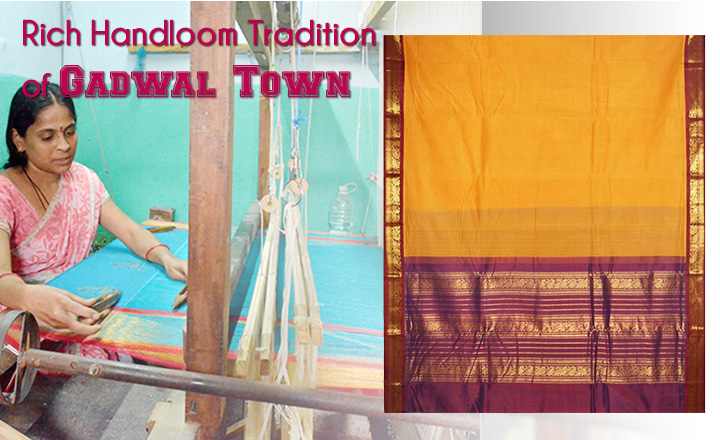Rich Handloom Tradition of Gadwal Town

Gadwal town in Jogulamba-Gadwal District of Telangana is considered world famous for its special handloom zari sarees.The sarees of Gadwalare highly popular over many decades.The historic town is known for its characteristiccotton sarees that come with an attached silk border as well as silk pallu.Gadwal town, located nearly 210 km from Hyderabad is well accessible by Bangalore-Hyderabad National Highway 7. The weavers of this town, also create pure silk models of Gadwal sarees.
Special Quality Handlooms of Gadwal
Gadwal handlooms are quite popular for the durability of the various colours that are used in the yarn. The mixture of these colours gives the durability. The count used in weaving technique results in the softness as well as the hardness of the fabric. The ‘count’ refers to number of threads which are used for the length and breadth of weaving, which is known as warp and weftusually. The speciality of each and every thread used in Gadwal saree is that itis hand woven.
Process of Making Gadwal Sarees
The materials used in manufacturing Gadwal handloom sarees are Silk / Cotton and Zari. The silk border is made of Tussar or mulberry and the body is made using unbleached cotton. There is even coloured cotton or silk checks used.
The process of making a Gadwal Saree starts with the process of dyeing silk or cotton yarn. Dyeing is a colouring process achieved by dipping the yarns in boiled color water at a very high temperature. The colours are applied based on the specification by weavers and orders from customers. After drying the yarn in shade, it is then rolled over small sticks and finally converted to thread. Theyarn is now loaded as warp into the loom for the actual process of weaving.
“Kotakomma Sarees”
The local weavers are highly skilled wherein more than five meters of saree fabric could be folded to fit in something as small a match box.Gadwal Sarees are woven traditionally according to the interlocked-weft technique (Kuppadam or Tippadam) or Kotakomma (also called as Kumbam) with respect to the design of the borders. Hence these are also known as Kotakomma or Kumbam sarees.